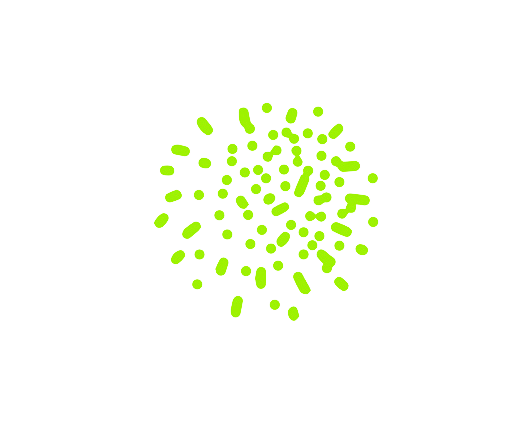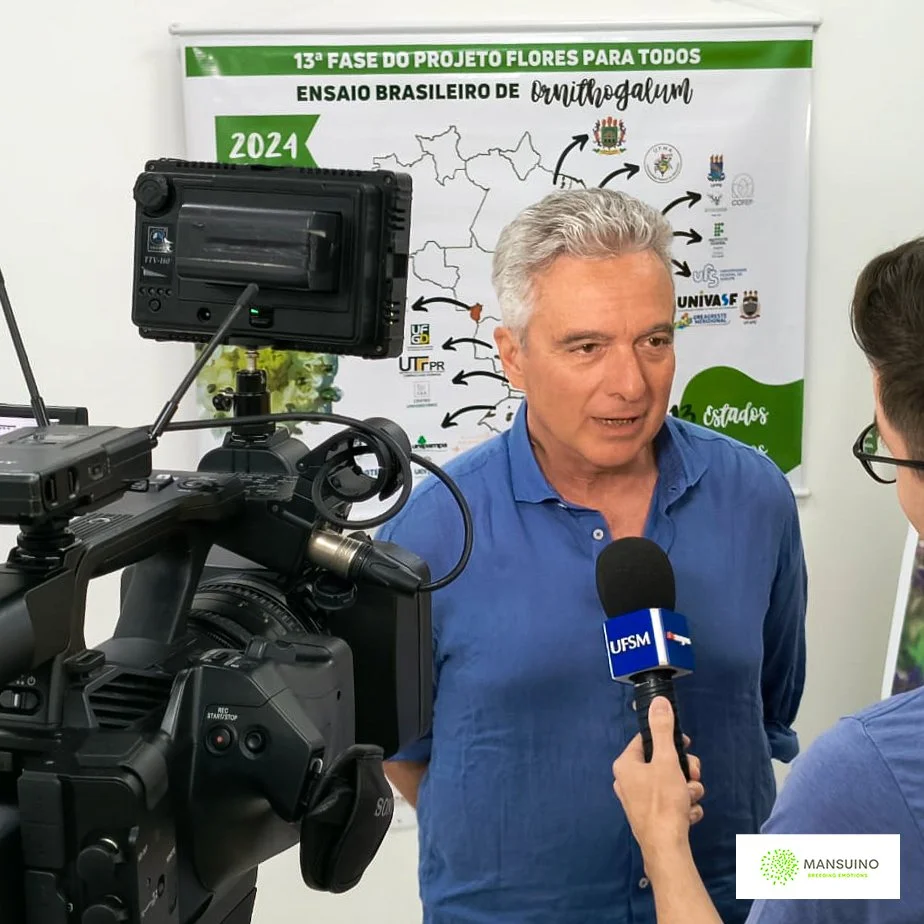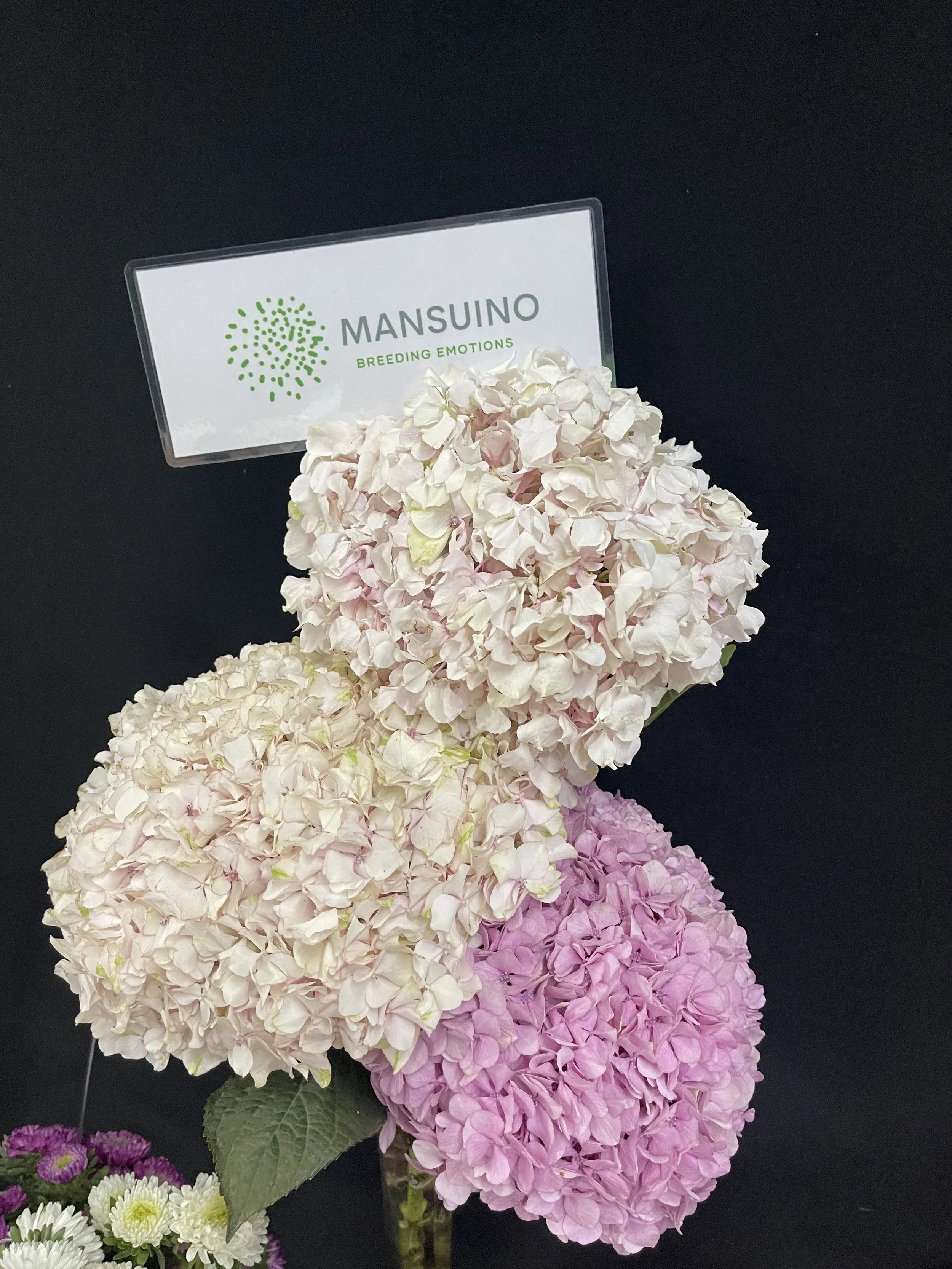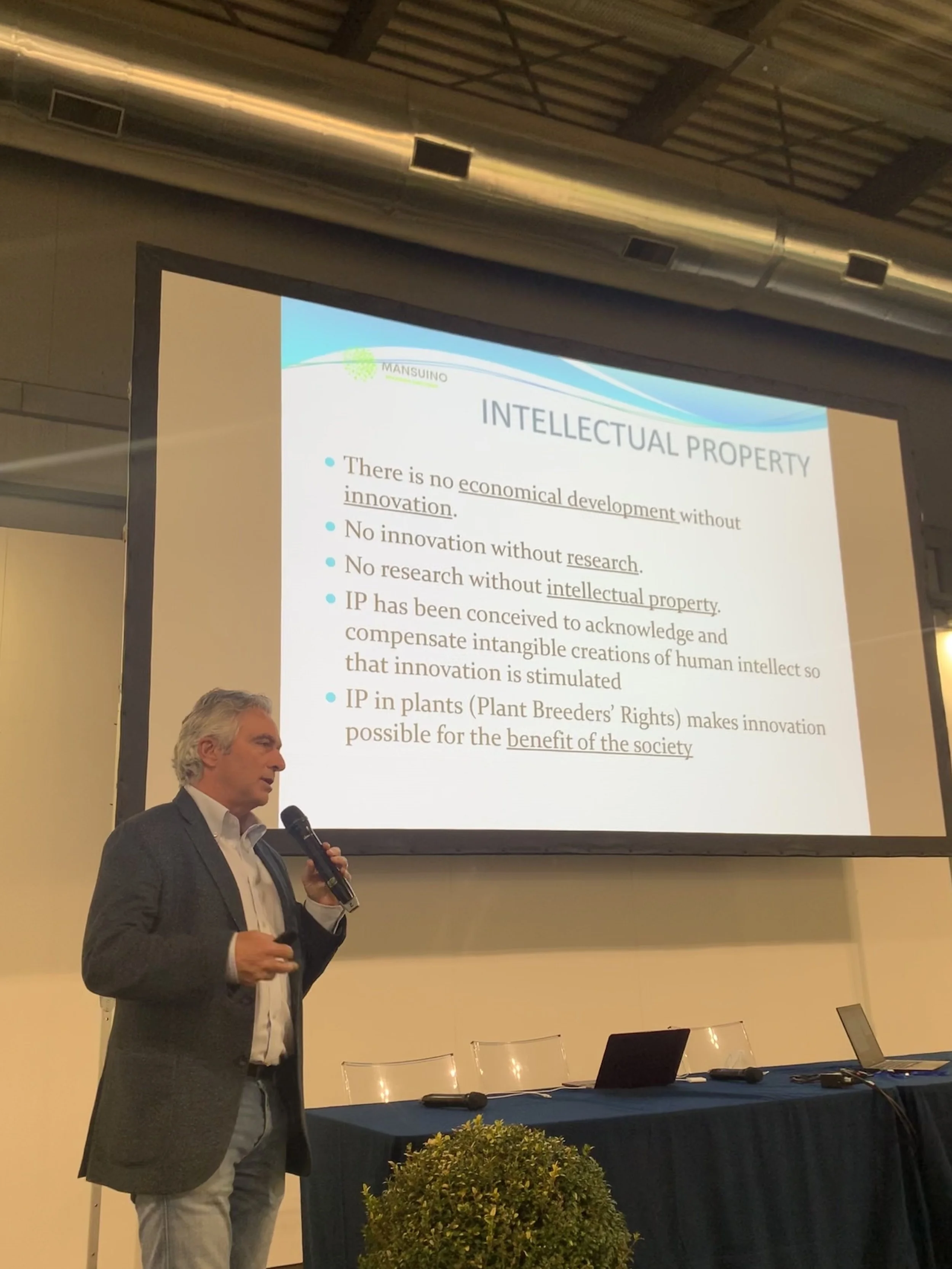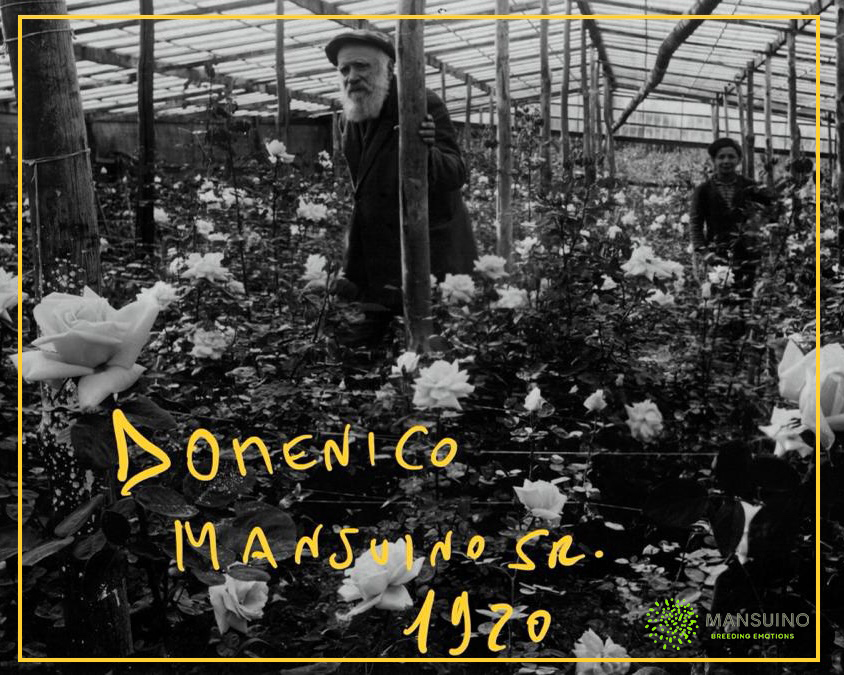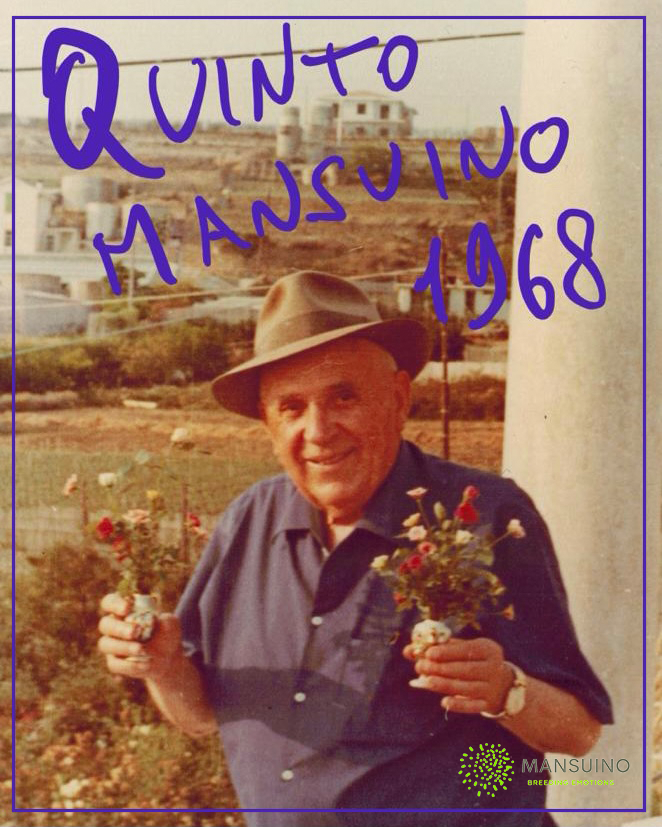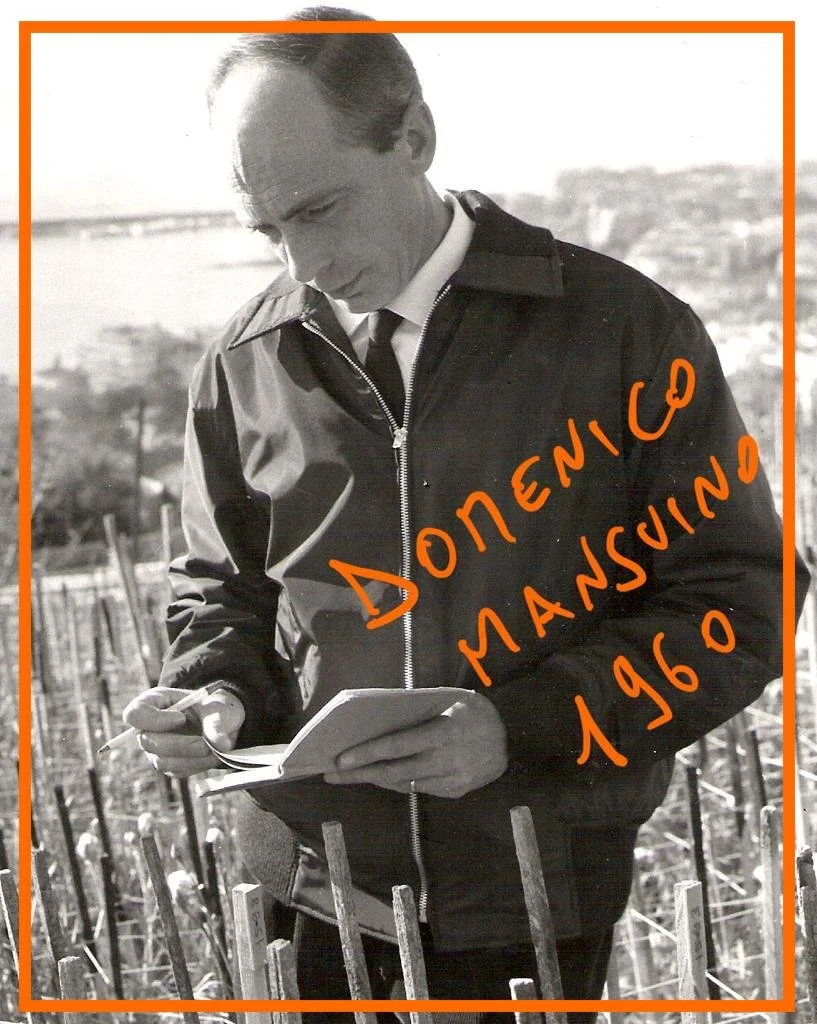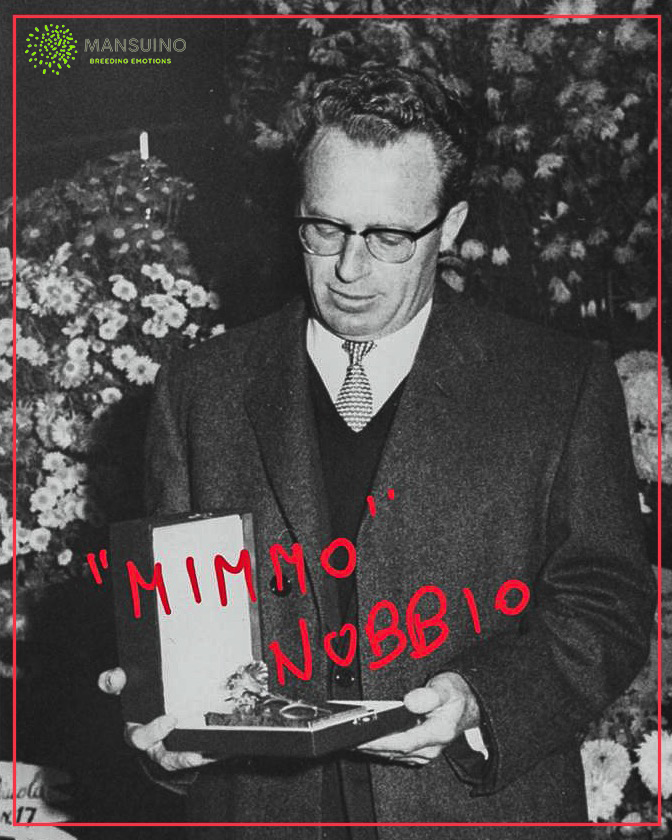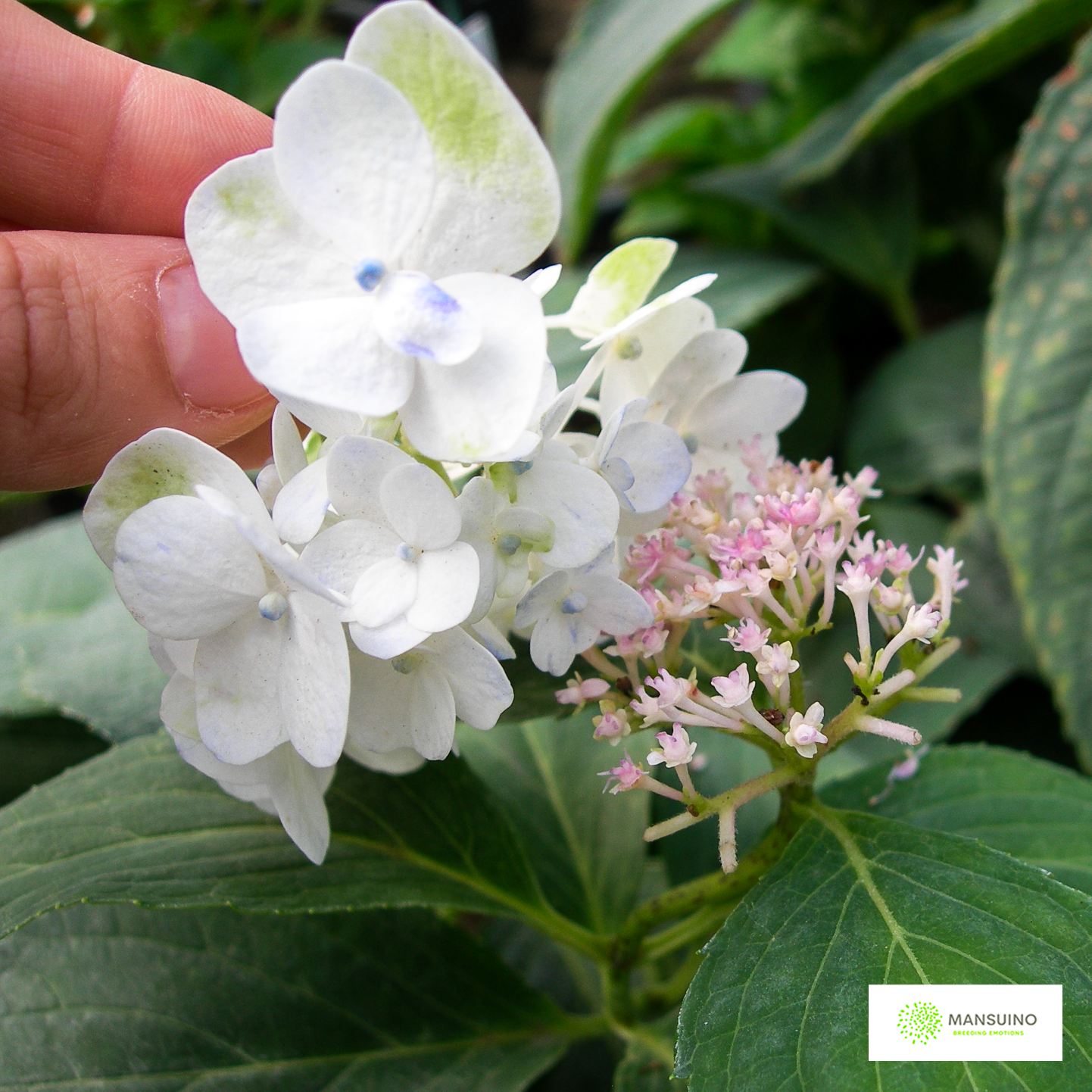
ABOUT US
Mansuino is an Italian family of breeders of ornamental plants and horticulturists, active in Liguria and internationally for more than one century.
Today, the growing and the breeding are carried on in a small, environmental friendly flower farm (Azienda Agricola Andrea Mansuino) which produces hydrangeas and ornamental foliage. Azienda Agricola Andrea Mansuino produces also green energy thanks to a photovoltaic solar system which saves the environment around 500 Tons of CO2 per year.
The commercial and advising activities are carried on by a limited company, MANSUINO s.r.l., who selects and edits new hydrangea varieties for the international market. Mansuino s.r.l represents also new varieties of various ornamental crops from other breeders who trust Mansuino for its reliability and international business knowledge.
The Director, Andrea Mansuino, has been involved in breeding, growing and propagating ornamentals for more than thirty years, in the past with specific focus on growing and breeding roses, and more recently breeding and growing hydrangeas and other crops.
Andrea Mansuino has been active in the international flower industry at different levels and a.o. has been for six years President of CIOPORA, the international community of breeders of asexually propagated ornamental, fruit and horticulture crops and for three years member of the National Board of Confagricoltura, one of the main agriculture organizations in Italy.
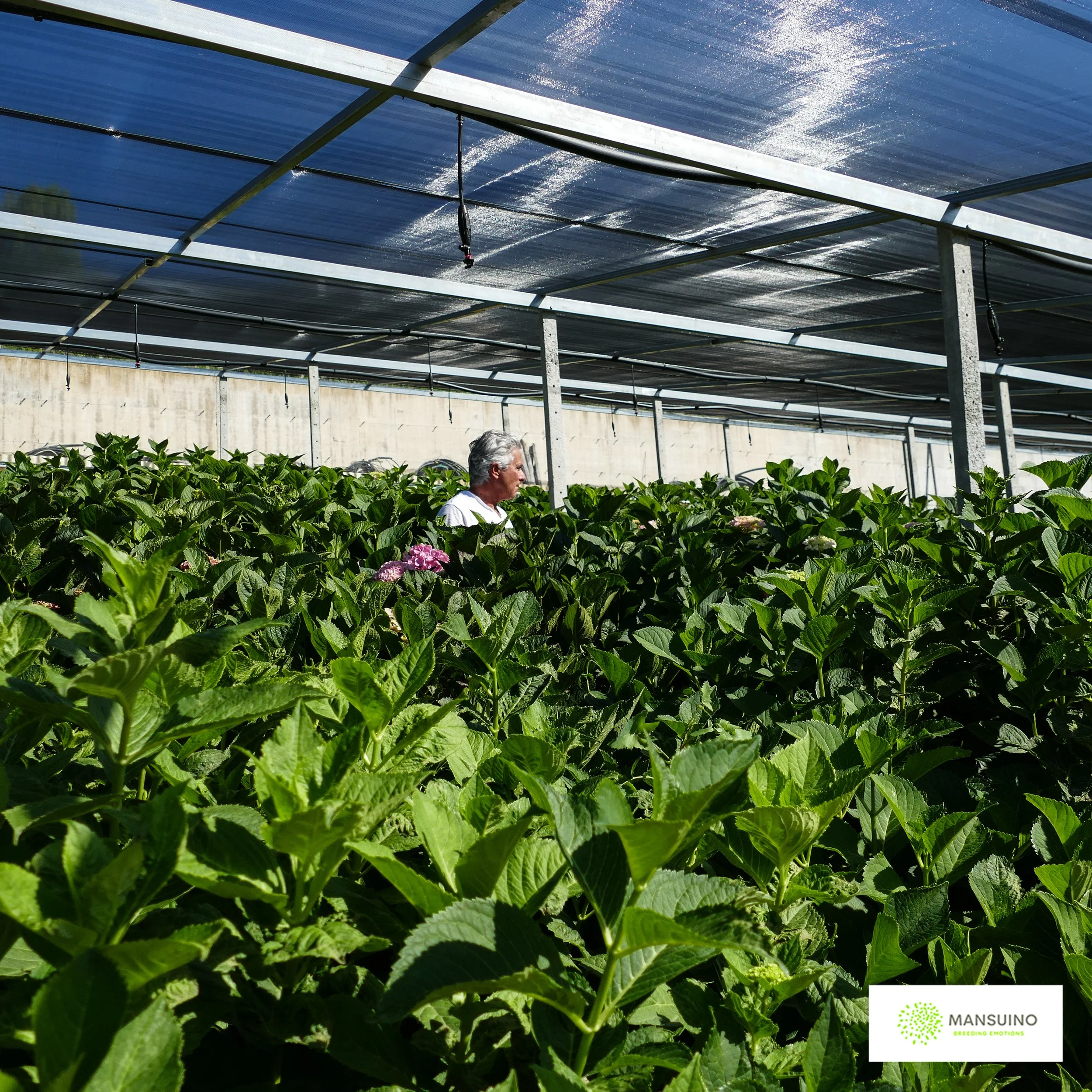
HISTORY
The flower passion of the Mansuino Family began more than one century ago, when Domenico Mansuino, a young man from the south of Piemonte, after emigrating first to the south of France, for a short period, decided to move to Sanremo in the Italian Riviera.
At the beginning of the 20th Century, Sanremo was a small nice town on the Mediterranean coast, blessed by a very mild climate and by a quiet life based on some tourism and agriculture.
Due to the climate, many small farmers on the sunny hills of Sanremo decided to start growing flowers, not only for the local market but especially for exports to the north of Europe and to the far Russia, thanks to excellent train connections from a local station that was inaugurated in 1872.
Therefore, Domenico Mansuino, who as main business established a pioneering photo studio, decided to buy a property on Poggio di Sanremo (which later became a famous hill because it is the last hard effort for the cyclists running the Milano – Sanremo) and around 1920 started growing roses for cut flower.
One of his sons, Quinto Mansuino, was bored of staying all day in the darkness of a photo lab, and decided to take over the growing, and, also inspired by his friend Domenico Aicardi, started his first breeding efforts on carnations and some other crops.
During the 2nd World War the photo lab, in the center of Sanremo, was destroyed by a bombing, and the whole Mansuino family was left without the main business. Therefore, Quinto, who in the meantime made the growing and breeding more developed and profitable, invited two of his nephews to work with him in the flower farm.
They both learned very well the profession of growing and breeding.
One of the nephews was Giacomo Nobbio, who soon decided to start his own business and became one of the most prominent carnation breeders in the history of this crop.
The other nephew was Domenico Mansuino jr., who in the fifties graduated from University as a pharmaceutical chemist, but then acted as director of the Manuino breeding business of his uncle, which he inherited, and who especially revitalized the rose breeding lines of small cut roses that are internationally known as “rose mansuiniane”.
One son of Domenico jr., Andrea, after graduating in biology and genetics, decided to continue the breeding passion of the family.
However, in those years (the eighties), the flower industry had heavily changed, and the globalization of the markets moved the main areas of cut flower production from Europe (and USA) to more remote countries, initially Colombia and from the mid-nineties also Kenya and Ecuador among others.
Therefore Andrea Mansuino decided to broaden his horizons and developed a more international approach of his job, both as grower and breeder in his properties in Sanremo, and as partner in other ventures which took him to accept responsibilities in breeding, licensing, advising at other businesses and to develop networks and know how through other commitments, such as e.g. the presidency of CIOPORA (international association of breeders).
Nowadays Andrea, forth generation grower and breeder in the Mansuino Family, is active in breeding ornamental crops and in representing and advising other colleagues, with unchanged passion.
Andrea always says “I am lucky, I never worked all my life, I just did what I loved”.

OUR LEGACY
DOMENICO MANSUINO SR. (1850-1933)
At the end of XIXth century, Domenico Mansuino Sr. moved from south of Piemonte to south of France, and then to the Italian Riviera. He established in Sanremo around 1880 and started two very different, and at the same time both very creative, activities: he established a photo studio in the city center and he bought land on the hills where he decided to grow cut flowers.
At the beginning of the XXth century Sanremo developed a sparkling flower production, both outdoors in open fields and also in wooden greenhouses. The flower production became very successful thanks to the railway that enabled growers to ship their fresh flowers to the north of Europe and even to the far Russia. Domenico was not aware that he was the beginner of a “flower legacy” that continued through four generations until today!
QUINTO MANSUINO (1889-1981)
It is not easy to describe in few words an influential and genial personality as Quinto. His story is simple, his impact on the italian and global floriculture is complex. His father Domenico was a professional photographer, and the destiny of Quinto seemed to be written already. He served during the First World War as army photographer, and after the war he came back home and joined his father in the photo studio in Sanremo. But he was soon attracted by the secondary business of his family, a small flower farm on the hills of Sanremo. And that’s where he decided to move in the early ‘20s, to live in the countryside and to grow and hybridize flowers. His life could never have been different, he followed his dreams. He worked his whole life on genetic improvement of many crops, but he definitely made the difference on two main ones in particular: roses and carnations.
He’s acknowledged as creator of an innovative series of miniature roses for cut flower, known as Roses Mansuiniane, and he established elaborated inter specific breeding lines in the same crop that a.o. produced a very famous Rosa Banksia inter specific hybrid called “Purezza”. And he’s especially renowned as the initiator of a new breeding line of carnations, that have been later continued and developed further by his pupils (especially his nephew Nobbio, his wife Nicoletta Baratta and many others): the “Mediterranean” carnation, today known as “standard” carnation. On all the crops he worked, he used to start original breeding lines back from wild species, and for his passion and creativity he’s regarded as the father of the Italian genetic improvement on cut flower crops.
DOMENICO MANSUINO (1924-2005)
After a degree in pharmaceutical chemistry, in the second half of the fifties he joined the carnations and roses breeding company of his uncle Quinto, where he remained as director until his retirement in the eighties. Shy and creative, he teamed with his sisters Ada and Mary in the development of the family’s international business. He was one of the founding members of CIOPORA in Geneva, in March 1961.
GIACOMO NOBBIO (1925-2005)
Giacomo “Mimmo” Nobbio was the son of a sister of Quinto Mansuino. He graduated in Agronomy at the Turin University after the second World War and then he joined his uncle Quinto in the breeding company in Sanremo. He soon became a carnation breeding specialist and after some years decided to leave his uncle’s company, to establish one of his own. He got married with Nicoletta Baratta, and together they started a business that in few years became the worldwide leading carnation breeding operation. They picked up uncle Quinto’s ideas and knowledge, and developed further into a highly professional development of the standard carnation lines, thus obtaining international fame and success. “Mimmo” was a very shy person, indeed, but his passion for carnations could turn him into an enthusiastic leader, so that many others around him were involved in his passion and learned his breeding methods and philosophy. Thanks to his vision and skills, Sanremo for many years has been considered as the craddle of standard carnations research at global level!
A breeders’ summit at Mansuino Farm, Sanremo 1956.
Our family has been active in growing and breeding flowers for more than a century. This historical pic shows a group of flower breeders visiting the rose selection trial fields at our farm on the hills of Sanremo. We believe that those breeders summits have been the background for the foundation of CIOPORA, the international association of breeders of ornamentals and fruit, which was established in Geneva in 1961 on initiative of the French breeder Meilland and of the Italian breeders association ANFI.
From left to right: Harry Wheatcroft, Vittorio Barni, Quinto Mansuino, Sidney Hutton, Ada Mansuino, Domenico Aicardi and Alain Meilland.
ADA MANSUINO (1914-1995) and MARY MANSUINO (1913-1993)
Quinto had two nieces, Ada and Mary, who have been very active in the breeding and in the commercial relations of the Mansuino breeding business. They were both very creative. Ada played violin, could speak four foreign languages, loved painting, comics and art. Mary played piano, could speak three foreign languages, and had a deep knowledge of plants. For many years they have been involved in breeding roses and carnations, though they were seldom acknowledged for their work just because they were women in a men’s business. In this nice picture taken in the early seventies, they are together with Eva Mameli, who, together with her husband Mario Calvino, was an international well known botanist and whose son Italo has been one of the most prominent Italian novelists of the second half of the XIX century.

